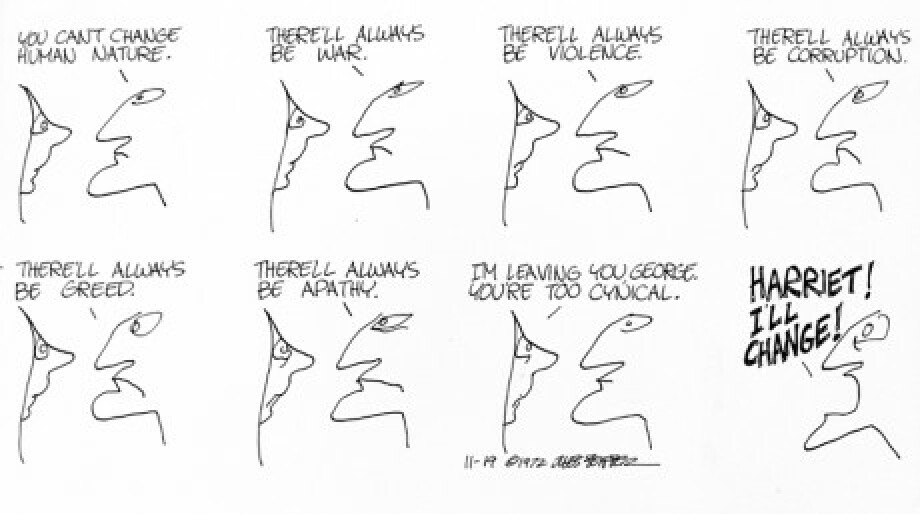 If you find that your life, your oceanliner is stuck in a tight bay and it isn’t turning around, this article will teach you something that the knowing of can make a difference.
If you find that your life, your oceanliner is stuck in a tight bay and it isn’t turning around, this article will teach you something that the knowing of can make a difference.
 Remember, when life isn’t working as you expected, there is something that you didn’t know… and it is always in the invisible realm of reality… And so is with this one.
Remember, when life isn’t working as you expected, there is something that you didn’t know… and it is always in the invisible realm of reality… And so is with this one.
As I said before, ess, evolutionary stable strategy, is where humanity finds itself, where you personally find yourself, and when you muscletest anything, it is ess, aka the selfish gene is what answers your question… unless you muscletest while connected to a higher-than-the-genes consciousness.
OK, that was quite a mouthful. Sorry about that…
Wherever you are in life, in any area of your life, you are always in ess. In ess your actions, your ideas, your advisement will come from a “source” that wants to maintain that ess… If you are fat… then maintain being fat. If you are inactive, then maintain inactivity. If you are always engaging in bombastic dreams, then maintain that… engaging in bombastic dreams.
If you act in life like you already know what you need to know, then ess wants to maintain that. If you read, then maintain reading, if you don’t, then maintain not reading.
Inauthenticity, anger, fear, blaming, pretending to be stupid, pretending to be grateful, pretending to be positive… all behaviors are considered important by the genes to remain in ess.
Most of the people who come to me, don’t like their ess. All ess is about survival, no matter what level you are at. And survival is boring, surivival is often being sick… so yeah, I am there with you.
I have my own ess. And I have my own strategy to evolve in spite of my genes.
I’ll share it later…
Evolving in spite of my genes is the hardest work I have ever embarked on: but it’s not so hard that you cannot do it. Hard is good: it’s what makes it great, says anyone who has ever achieved anything worth achieving. Whether it is in business, in sports, in love, in war…
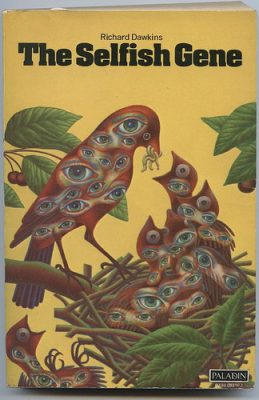 Your soul correction will tell you where and with what actions you keep yourself the same, keep yourself in ess… or alternatively, what misdirected actions you’ll try to use to evolve yourself… unsuccessfully.
Your soul correction will tell you where and with what actions you keep yourself the same, keep yourself in ess… or alternatively, what misdirected actions you’ll try to use to evolve yourself… unsuccessfully.
The soul correction tells you how you are off track. Arrogance, resistance, being in your head, groundless fear, groundless pride… there are many ways.
The number of people who look at their soul correction for guidance is close to zero, even though the principle of “strait and narrow” would explain that you get the biggest results from avoiding the traps that will predictably keep you from achieving your goals.
Because all your actions come from your “character” or characteristic behavior, controlling that would move you to the winning field… not controlling your “character” keeps you on the outside of the winning field.
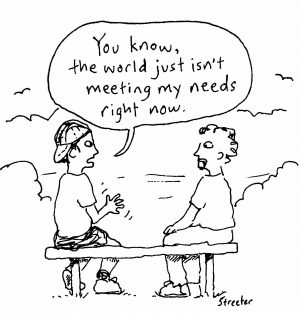 And that is why the world is full of wannabes with an occasional winner.
And that is why the world is full of wannabes with an occasional winner.
The wannabes always want to find out what the winners are doing, so they can copy it. But the character part of the winner is invisible. And an action in one hand is a winner, while the same action in the hand of another is a sure loser.
The internet allows us to see the visible actions of a lot of winners. Maybe even the “mindset”… But not the invisible.
One of these actions we get to see is experimenting.
In my reading of or about real winners, winners who remain winners, I can see that they are all experimenters. And the other thing I can see is that their character wasn’t, isn’t involved with their image, others’ opinion of them: that in their Starting Point Measurement they could successfully rise above the trap of thinking that everything is about them. The infamous #11 1 Actually, the truth is, that I can see their whole inner map on their Starting Point Measurements.
And because the Starting Point Measurements are not fixed, I can see what way to coach people who desire to be winners.
I had a coaching call with my business/marketing student yesterday.
The guy is an “I know” type of guy. He feels he knows everything and that is the core of his soul correction, and also his Horoscope sign, Virgo. 2
Every mistake, every failure he has ever had came from that “I know”.
As a coach my number one job is to move him out of that fixed position (character). To help him want to look. To help him want to ask. To help him use his considerable brain power to inquire into stuff he thinks he knows that he has never made any effort to find out.
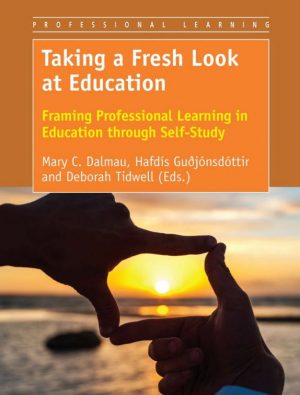 Yesterday I wrote about frames. I said that 40 of the 160 spiritual capacities are involved in the deciphering of the frames so you can create with your words.
Yesterday I wrote about frames. I said that 40 of the 160 spiritual capacities are involved in the deciphering of the frames so you can create with your words.
Someone with an “I know” frame has none of the 40… whereas winners worth learning from have several, but at least five. 3
The way you turn on a capacity is that you make yourself need it, by trying to use it. By asking questions.
One main way to ask questions is experimentation.
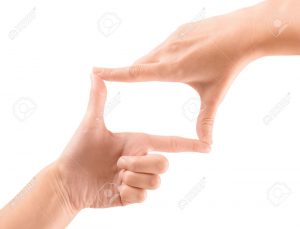 An experiment is only an experiment if you have a question that you test. No question, no experiment. But to ask question, at least one of the capacities out of the 40 needs to be active.
An experiment is only an experiment if you have a question that you test. No question, no experiment. But to ask question, at least one of the capacities out of the 40 needs to be active.
The first capacity to open is curiosity. If you are not interested in the answer, you won’t do the experiment, or it won’t be an experiment… right?
I have observed people who seemingly do experiments. They do this and then they do that. This diet, and that diet. This exercise and that exercise. This business plan and that business plan.
They all fail, and they are left with no learning. You don’t learn unless you have a question. You don’t learn if you have no curiosity.
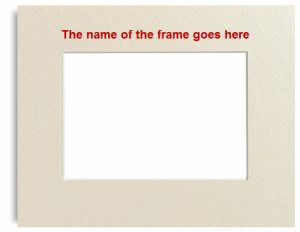 Curiosity is a desire. A desire to know. To see. To penetrate.
Curiosity is a desire. A desire to know. To see. To penetrate.
Most desire that run your life is for having. You consider the path to having, if you even consider it, as the price you are asked to pay for getting what you want to have.
Curiosity reverses this: you consider the path as the reward. And if you ask people on their death bed, they will tell you the same: none of the having give them warmth, or pride. Only the path, the hard stuff they were willing to go through.
What makes you happy is the “who you are” not the “what you have”. The victory over your soul correction, your selfish genes, the pull of mediocrity, the pull of fear, the pull of slothfulness and unreliability.
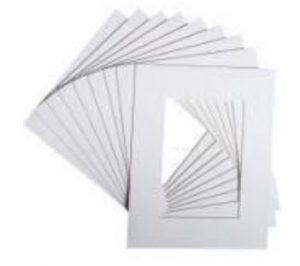 Frames are an excellent way to awaken curiosity.
Frames are an excellent way to awaken curiosity.
The question to answer: what is the name of the frame? Unless you poke at curiosity, you can’t answer. The name of the frame is invisible. Guessing won’t awaken curiosity. Faking it won’t awaken curiosity. Only looking will.
Looking at what? Looking at the visible. The visible will clue you in to its source, the invisible.
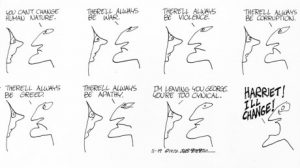 What is happening inside the frame will clue you in to the name of the frame.
What is happening inside the frame will clue you in to the name of the frame.
Muscletesting can help, by the way.
The problem with muscletesting is the same as with experimenting: muscletesting needs you to be curious.
Muscletesting brings up yet another element of “not-curious”.
If your questions are binary, yes/no, and remain there, your gain from muscletesting will remain very small. When you can expand your questions, through honest curiosity, to extrinsic… more facets than two, you’ll get great gains.
So, you see, unless you open up at least one capacity for self-evolution, you are just proving how smart you are, how much you know, how good you look, or the opposite. But no evolution is happening.
And I am not only talking about those that think they are losers. I am talking about all of us… humanity at large. Because in one area or in many we are all stuck in ess.
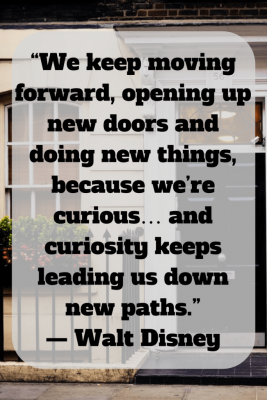 OK, will I train how to open up curiosity? you should ask. Really.
OK, will I train how to open up curiosity? you should ask. Really.
In my 35 years experience as a coach, I have found that only people who are in action can be coached.
You can teach stuff to people who are not doing anything, but you cannot coach them. Because coaching is a correct/redirect type of activity.
Coaching is not about moving a body “not in motion” into motion. That is called the Anthony Robbins type of motivational speaking. I am not good at that, I am not going there.
So my answer to the question: will I train how to open up curiosity? Yes, but only as part of my coaching practice.
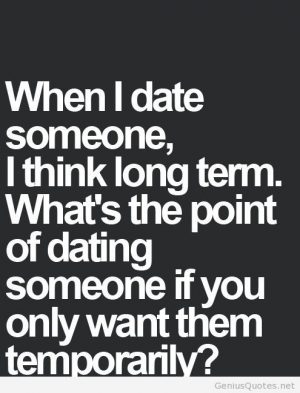 Because most people are not up to anything, not in action towards anything, are not in motion, I substitute that goal, that target, that motion, with the 67 steps.
Because most people are not up to anything, not in action towards anything, are not in motion, I substitute that goal, that target, that motion, with the 67 steps.
It puts people in motion, somewhat. Enough so they can be coached on the same level where their actions are.
- Small, insignificant, only about yourself actions… they are still actions.
You get coached in what you are doing. Not doing anything? There is nothing to coach about. - Self-examination? Re-evaluating your past? Attempting to rewrite your worldview? That is where you get coaching. These are activities too.
I do prefer to coach people who are doing something in the world. This is why I was so excited when this student added marketing/business coaching to our relationship.
The more you involve me in what you are doing, the more things I can coach you about. Duh… lol.
Wanting coaching comes from the same place as curiosity: the soul, the spirit wanting to fly.
Most students are NOT interested in the spirit flying.
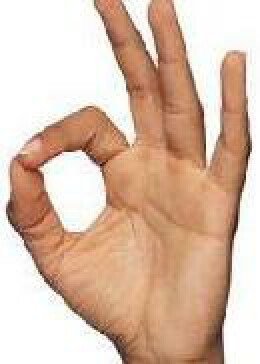 I make my decisions whether you are ready for coaching or not from your Starting Point Measurements, and your words. How? It is more a feeling than anything. And I also muscletest… while connected to Source.
I make my decisions whether you are ready for coaching or not from your Starting Point Measurements, and your words. How? It is more a feeling than anything. And I also muscletest… while connected to Source.
I, as a person, can see a lot. But Source is a vantage point much higher than I can ever aspire to get to… So I get advised… Or coached. By Source.
OK, here is the article that triggered my post. Enjoy
 Forget The 10,000-Hour Rule; Edison, Bezos, & Zuckerberg Follow The 10,000-Experiment Rule
Forget The 10,000-Hour Rule; Edison, Bezos, & Zuckerberg Follow The 10,000-Experiment Rule
Deliberate experimentation is more important than deliberate practice in a rapidly changing world.
Most people think that Edison invented the first light bulb.
They’re wrong.
In fact, Edison was spectacularly late to the game.
In 1878, when the 36-year-old inventor decided to focus on building a light bulb, 23 others had already invented early versions called arc lamps, some of which were being used commercially to light streets and large buildings.
So how did Edison win in such a crowded field when he was so far behind?
He and his team spent a year working day and night doing thousands of experiments. On October 21, 1879, they succeeded, creating a light bulb for everyday use in the home.
Edison would go on to pioneer five different multibillion-dollar fields with his invention factory: electricity, motion pictures, telecommunications, batteries, and sound recording. In today’s terms, you can think of Edison as Elon Musk, Jeff Bezos, and Mark Zuckerberg all rolled into one.
What was the key to Edison’s incredible success? In two words—deliberate experimentation. For Edison, building a company was synonymous with building an invention factory.
The technique is just as powerful today. “Our success at Amazon is a function of how many experiments we do per year, per month, per week, per day,” Jeff Bezos has claimed. In a recent interview, Mark Zuckerberg explained, “One of the things I’m most proud of that is really key to our success is this testing framework … At any given point in time, there isn’t just one version of Facebook running. There are probably 10,000.”
Bezos and Zuckerberg aren’t saying that experimentation is one of many strategies. They are saying it is THE strategy. In this article, you’ll see how luminaries across many fields use deliberate experimentation and how you can use it to increase your odds of success in your professional and personal life.
Why 10,000 Experiments Beat 10,000 Hours
Perhaps the most popular current success formula is the 10,000-hour rule popularized by Malcolm Gladwell. The idea is that you need 10,000 hours of deliberate practice to become a world-class performer in any field.
Research now tells us, however, that this formula is woefully inadequate to explain success, especially in the professional realm. A 2014 review of 88 previous studies found that “deliberate practice explained 26% of the variance in performance for games, 21% for music, 18% for sports, 4% for education, and less than 1% for professions. We conclude that deliberate practice is important, but not as important as has been argued.”
 This chart summarizing the results should cause any ardent believer in the 10,000-hour rule to pause:
This chart summarizing the results should cause any ardent believer in the 10,000-hour rule to pause:
This means that deliberate practice may help you in fields that change slowly or not at all, such as music and sports. It helps you succeed when the future looks like the past, but it’s next to useless in areas that change rapidly, such as technology and business.
What Edison and others (see more examples below) teach us is that we should maximize the number of experiments, not hours. Instead of the 10,000-hour rule, we need what I call the 10,000-experiment rule.
Throughout history, the scientific method has arguably produced more human progress than any other philosophy. At the heart of the scientific method is experimentation: develop a hypothesis, perform a test to prove the hypothesis right or wrong, analyze the results, and create a new hypothesis based on what you learned. The 10,000-experiment rule takes this proven power of experimentation out of the lab and into day-to-day life.
Following the 10,000-experiment rule means starting your day with not just a to-do list but a “to-test” list like Leonardo Da Vinci. According to Walter Isaacson, one of Da Vinci’s biographers, “Every morning his life hack was: make a list of what he wants to know. Why do people yawn? What does the tongue of a woodpecker look like?”
As you go through your day, following the 10,000-experiment rule means constantly looking for opportunities to collect data rather than just doing what you need to do. It means adding a deliberate reflection process based on reviewing data before the day ends.
For example, do you want to improve your sales results by asking a new question at the end of sales calls? Now every sales call becomes an opportunity to ask that question and collect data so that you can learn how to make better sales calls in the future. Do you want to sleep better so that you can have more energy during the day? You can research all the best practices for falling asleep, turn the most compelling ones into a routine, use a sleep tracker to get objective data on the quantity and quality of your sleep, and then make adjustments to your routine to improve the results.
To achieve 10,000 hours of deliberate practice requires three hours of deliberate practice per day for 10 years. I argue that the 10,000-experiment rule is just as difficult, yet doable, requiring three experiments per day.
Why 10,000 Experiments Yield Success According To Decades Of Academic Research
If Edison’s approach is universal, you would expect it show up repeatedly among top performers. As it turns out, the academic world has been studying the phenomenon for decades, and that’s exactly what they’ve found.
Researcher Dean Keith Simonton has spent his career studying the world’s preeminent creative achievers and painstakingly dissecting their careers to find patterns. To share his findings, he has published more than 340 academic articles and 13 books, including Greatness: Who Makes History And Why and Origins of Genius: Darwinian Perspectives on Creativity.
Two fascinating insights have emerged from Simonton’s (and others’) research. The first is that most innovative ideas are generated by a small number of superstars. In any given field, the top 10% of performers produce more than 50% of breakthroughs.
Why are these superstars so much more successful? Is it because their ideas are just superior from the get go? Here’s what is really fascinating: The answer is no. The second lesson to learn from Simonton’s research is that superstars produce just as many bad ideas as everyone else—they just produce more ideas overall. Having many more ideas means they have more failures but also more hits.
“What is especially fascinating is that creative individuals are not apparently capable of improving their success rate with experience or enhanced expertise,” Simonton has written. “Creative persons, even the so-called geniuses, cannot ever foresee which of their intellectual or aesthetic creations will win acclaim.”
In other words, the key to maximizing creative success, according to the theory, is producing more experiments.
Editorial Note: For a more nuanced understanding of the Blind Variation And Selective Retention, you can read Simonton’s 2011 Academic Paper, Creativity and Discovery as Blind Variation: Campbell’s (1960) BVSR Model After the Half-Century Mark.
From Health to Stand-up Comedy: The 10,000-Experiment Rule Applies Across Fields
When you consider many of the most important achievements across different fields, you often see this theory at play.
 A Fast Company article written by advertising legends Ben Clarke and Jon Bond points out that thanks to a combination of new technologies and lean business approaches, the world’s most innovative businesses are running thousands of experiments more annually:
A Fast Company article written by advertising legends Ben Clarke and Jon Bond points out that thanks to a combination of new technologies and lean business approaches, the world’s most innovative businesses are running thousands of experiments more annually:
In academia, Einstein is best known for his paper on relativity, but he published 248 other papers. Paul Erdos coauthored more than 1,500 mathematical research articles during his career. 1,500! As you might expect, Erdos made significant contributions, and although most of his papers have been forgotten, a handful of them made him one of the most influential mathematicians of the 20th century! Now consider that fewer than 1% of scientists publish a paper every year.
 In the world of entertainment, SNL, one of the longest-running TV shows in history, has a grueling weekly experimentation process of brainstorming, researching, and rewriting scripts. Only a tiny percentage of sketch ideas ever air. The iconic cartoons published by The New Yorker are the result of a process in which 50+ freelancers submit up to 10 sketches each for consideration per week:
In the world of entertainment, SNL, one of the longest-running TV shows in history, has a grueling weekly experimentation process of brainstorming, researching, and rewriting scripts. Only a tiny percentage of sketch ideas ever air. The iconic cartoons published by The New Yorker are the result of a process in which 50+ freelancers submit up to 10 sketches each for consideration per week:
Pixar, one of the most successful movie studios in history, developed 100,000+ storyboards (i.e., step-by-step plot sequences) for the film Wall-E’s ultimate plot. 100,000!
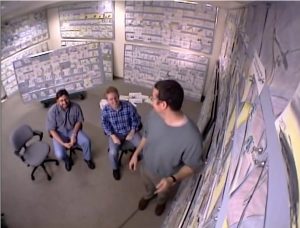 Source: Pixar Storyboarding Mini Doc
Source: Pixar Storyboarding Mini Doc
Those who enthusiastically embrace experimentation in their personal lives tend to reap significant benefits as well. Take, for example, Shonda Rhimes, producer and writer of Grey’s Anatomy, Scandal, and other hit shows. She set up an experiment she called The Year of Yes to confront her debilitating social anxiety, limit her workaholism, and accept herself. Instead of continually saying no to social experiences, she committed to saying yes for an entire year. Among the many lessons she learned from the experience was that to know what to focus on you first need to try many things.
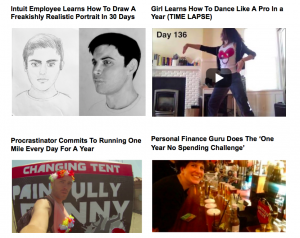 Entrepreneur Jia Jang took something most of us fear—rejection—and made it into an experiment with his 100 Days of Rejection project. Every day for 100 days he forced himself to do something socially awkward, where the result was likely to be rejection (i.e., asking to play soccer in someone’s backyard), all while video-recording himself. Journalist Elizabeth Gilbert quit her job and marriage and then spent a year traveling the world to discover herself. She divided the year into three experiments: eat, pray, and love. Her experience turned into a best-selling book and movie. Young entrepreneur Ari Meisel used data and experimentation to cure his Crohn’s disease, which his doctors said could not be cured.
Entrepreneur Jia Jang took something most of us fear—rejection—and made it into an experiment with his 100 Days of Rejection project. Every day for 100 days he forced himself to do something socially awkward, where the result was likely to be rejection (i.e., asking to play soccer in someone’s backyard), all while video-recording himself. Journalist Elizabeth Gilbert quit her job and marriage and then spent a year traveling the world to discover herself. She divided the year into three experiments: eat, pray, and love. Her experience turned into a best-selling book and movie. Young entrepreneur Ari Meisel used data and experimentation to cure his Crohn’s disease, which his doctors said could not be cured.
Source: To Become Who You Want To Be, Try These 15 Life Experiments
Understanding The Math: If You Can Do Enough Experiments, Success Is Virtually Guaranteed
If experimentation is so powerful, why don’t more people do it?
I say that there are a few reasons…
First, we live in a culture that is obsessed with productivity: getting more done and less time, systematizing, automating, and even outsourcing. If one has a frame of short-term productivity, then taking time out of your day to nurture a creative process with unpredictable results that don’t pay off immediately is extremely hard. What is productive in the long-term often feels not productive in the short-term.
Also, performing experiments is time intensive. To squeeze out some deliberate learning every day requires at least 15 minutes, but even more challenging is that most experiments fail. While failure is increasingly celebrated in our society, most people still have a visceral feeling of shame and disappointment that comes from it.
It wasn’t until I understood the math behind experimentation that I was able to get past my fear of failure.
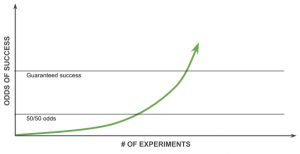 1. If you do enough experiments, the odds are in your favor. The quality of each subsequent experiment increases because you will tend to apply the lessons learned from previous experiments. Those lessons make your success curve exponential rather than linear.
1. If you do enough experiments, the odds are in your favor. The quality of each subsequent experiment increases because you will tend to apply the lessons learned from previous experiments. Those lessons make your success curve exponential rather than linear.
2. One big winner pays more than enough for all the losing experiments, as Jeff Bezos explained in a recent SEC filing:
Given a ten percent chance of a 100 times payoff, you should take that bet every time. But you’re still going to be wrong nine times out of ten. We all know that if you swing for the fences, you’re going to strike out a lot, but you’re also going to hit some home runs. The difference between baseball and business, however, is that baseball has a truncated outcome distribution. When you swing, no matter how well you connect with the ball, the most runs you can get is four. In business, every once in awhile, when you step up to the plate, you can score 1,000 runs.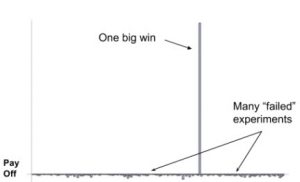 Source: Nassim Taleb
Source: Nassim Taleb
3. Today’s tools allow anyone to increase their quantity of experimentation by an order of magnitude. A new breed of affordable apps, services, and trackers help us learn about what works for other people, collect data on ourselves, interpret it, stay accountable, and track our progress in real time. In the health space, for example, these new tools have led to the biohacking and quantified self-movements where people use blood glucose levels, sleep, activity, heart rate, gut biome, and genetics to facilitate their experimentation. Similar experimentation explosions are happening in the world of relationships, sexuality, intelligence, happiness, productivity, and personal finances.
If so many people across so many fields can incorporate deliberate experimentation, so can you!
What We Can Learn From Edison About Actually Living the 10,000-Experiment Rule
Edison didn’t intend to just be more inventive. He created an experimentation factory to guarantee that he and his team consistently released new inventions. Edison’s goal, for example, was one minor invention every 10 days and one major invention every six months. When he was on the edge of a major breakthrough, such as the light bulb, he had a unique process called drag hunts in which he would generate and test hundreds, even thousands of possibilities.
So what could the 10,000-experiment lifestyle look like for you?
I recommend taking two steps now that could change everything for you.
First, identify at least one jackpot experiment that could change your life. The road to deliberate experimentation starts with one experiment, but not all experiments are created equal. Some experiments are extremely time and money intensive. Some create incremental changes, while others could be life changing. Some have a 1% chance of success. Others are a sure bet. When picking a first jackpot experiment to pursue, you want to pursue an experiment that is easy to do monetarily and timewise, has the potential to be life changing, and carries a reasonable probability of paying off. I call these Jackpot experiments.
Second, I recommend running three experiment tests each day. When you start the day, identify three tests you want to perform. Collect data throughout the day, and before the day ends, analyze the results.
Try this for one month, or 30 tests, and see the difference it makes!
Interested in really taking action to become a deliberate experimenter? After studying how dozens of the world’s most prolific experimenters work, we spent dozens of hours creating a free mini-course that includes several email lessons and a webinar to help you be successful with the 10,000-experiment rule. It includes case studies of experimenters who improved their health, confidence, and lifestyle, tips on how to perform a valid experiment, details on the nuances of Blind Variation And Selective Retention and much more.
PS: The truth value of this article is 7%. Why? Because all of the article is coming from the visible.. and even that it gets occasionally wrong.
- 1. your vibration (1-1000):
2. your overall intelligence, emotional, intellectual, spiritual, body, relationship, etc.:
3. the number of spiritual capacities you have:
4. your soul correction (your machine): https://yourvibration.com/sc
5. do you have attachments?
6. the level of your health (1-100):
7. the level of your cell hydration (1-100):
8. your relationship to feedback and instruction:
9. The level of discomfort you are willing to allow w/o trying to fix it. This is your TLB score…
10. The size of your vocabulary: the number of words you can use accurately:
11. To what degree you think of yourself:
12. # of fixed mindset:
13. Ambition:
14. Desire:
15. Degree of inauthenticity overall:
16. Level of integrity 1-100:
17. Recommendations: - My Soul correction is quite similar and I am also a Virgo :-(
- How do I know? I asked Source in muscletesting. Otherwise I would have no idea.
